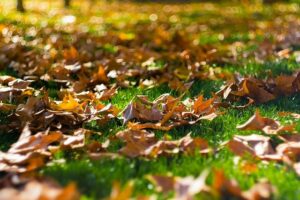Winter is coming. Chilly conditions are on their way, and you’re looking at a few long months of sitting by the heater, rugged up with a cup of hot tea in your hands.
But while you snuggle up indoors, some living creatures aren’t so lucky – your lawn for one. Instead, it will be stuck outside battling the elements, doing its very best to survive the frosty mornings, the lack of sunlight and the winter rains.
As a lawn owner, the month of May is your final opportunity to prepare your lawn for the long winter ahead. Its mild conditions provide you with the chance to strengthen your lawn, giving it the very best prospect of getting through the coldest time of the year unscathed. So what lawn maintenance should you be considering in May? Here are just a few things a good lawn owner will be sure to keep in mind.
It’s getting wetter all the time
May represents a transitional time of the year for the whole of Australia. In the more temperate southern reaches, rain will begin to fall far more heavily and reliably. In the tropical north, the last of the wet season rains will be leaving. No matter where you find yourself, May is a time when you should be mitigating the effects of heavy rainfall.
While generally regarded as a great thing for your lawn, rain can actually have some quite negative effects on the long-term health of your turf, particularly when it comes in downpours. The first is the leaching of nutrients – heavy rain can serve to strip your soil of the important nutrients it needs to survive and thrive. The second issue caused by excess moisture is that of soil compaction – where the water makes the soil settle down on itself to a point at which air, nutrients and even moisture can no longer penetrate the topsoil. This is particularly the case in high traffic areas where the weight of people and vehicles compound the problem.
These two issues both have simple solutions which should be put into practice during the month of May. First you should aerate your soil to ease the strain caused by compaction. This is as simple as getting a garden fork and making 5-10cm deep holes at regular intervals throughout your lawn, with a particular focus on high traffic areas. You can use a purpose-built rolling aerator which can save you some serious time, particularly on larger areas. Once aerated, use a good NPK fertiliser to replenish the nutrients that may have been washed away.
A little bit of extra height
The warm season lawns so common in Australia are called “warm season” for a reason – they much prefer the heat to the cold. Winter can be a tricky time for the likes of Couch, Kikuyu and Buffalo grass, and they need all the help they can get to make it through the period unscathed.
The main issue is that warm season grasses love the sun, and in winter there’s simply far less of it. The ability to photosynthesise and keep the engine of the plant running is severely hampered. For that reason you want to give your turf the greatest opportunity to capture the sun as you can. You want to grow the blades out a little, so that the photosynthesising area is larger.
Whereas you might cut your warm season grass down to 30-35mm during summer (depending on the variety – check your McKays seed specifications for more information), this should be extended to 50-70mm during the month of May, and throughout winter as a whole. The shadier the spot, the higher your mower should be set.
Lawn maintenance in May is all about preparing for the conditions ahead. As your doctor has always said, prevention is better than cure. By being smart about how you treat your lawn in May, you’ll be able to prevent the browning off that is so common for Australian lawns in winter, rather than attempting to cure it in the spring.
If you’ve got any further questions regarding proper lawn maintenance in May, don’t hesitate to contact the friendly team at McKays.
Does perennial ryegrass come back every year?
Perennial ryegrass is a type of grass that does indeed come back every year. This is in contrast to annual ryegrass, which only lives for one growing season before dying off. Perennial ryegrass is a popular choice for lawns and turfgrass because it is very hardy and can withstand a lot of wear and tear. It is also relatively low-maintenance, requiring only occasional mowing and watering.
How do you care for perennial ryegrass?
Perennial ryegrass is a versatile and hardy grass that is easy to care for. It tolerates a wide range of soils and climates, and is relatively drought-resistant. However, like all grasses, it does require some basic maintenance in order to stay healthy and looking its best.
Mowing is the most important aspect of care for perennial ryegrass. It should be mowed regularly, at least once a week, to keep it from getting too tall. The height of the grass should be kept at around 3 inches. This will ensure that the grass stays dense and lush, and prevents it from developing bare patches.
Perennial ryegrass also needs to be fertilized periodically. A slow-release fertilizer should be applied every 6-8 weeks during the growing season. This will help the grass to maintain its green color and keep it from getting thin and weak.
Finally, perennial ryegrass needs to be watered regularly. It should be watered deeply and evenly, about 1 inch per week. This will help it to develop a deep root system and stay healthy during periods of drought.
How long does perennial ryegrass take to establish?
Perennial ryegrass is a type of grass that is often used for lawns, pastures, and other areas where a grassy surface is desired. It is a fast-growing grass that can establish itself quickly, often in as little as two weeks. Once established, it is a hardy grass that can tolerate a wide range of conditions, from drought to heavy traffic.
What time of year do you plant perennial ryegrass?
Perennial ryegrass is a cool-season grass, which means that it thrives in cooler temperatures and goes dormant in hot weather. In general, you should plant perennial ryegrass between Autumn and Spring, when the temperatures are cool. This gives the grass the best chance to establish itself.
Test
test



